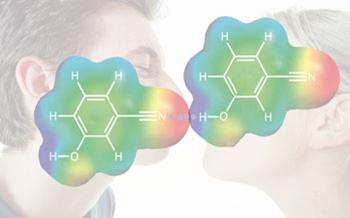Pairing up drugs with cocrystals could improve their properties and delivery
A simple analysis of hydrogen bond strengths finds the best crystallisation partners for drugs, say UK scientists.
The properties of active pharmaceuticals can be altered by crystallising them with an inactive partner molecule in a cocrystal. Finding good cocrystal partners experimentally is time consuming, and current computational methods are laborious as they calculate the crystal structure, atom by atom. Cocrystals could provide new ways to deliver drugs and improve their properties, so the search for them is on.
Hydrogen bonds and other electrostatic interactions influence how molecules interact, and the energies of such gaseous interactions are straightforward to calculate. Chris Hunter and colleagues at the University of Sheffield, UK, University of Barcelona, Spain, and AstraZeneca, UK, assumed that these interactions don’t change in a solid crystal and that the crystal packing is less important than electrostatics. These are controversial assumptions but the calculations based on them work.
The team calculated the strength of each interaction site in both active and partner molecules. They paired the best interaction sites, the second best, and so on, to rank interaction strengths and relative contributions to the cocrystal. This procedure gives a picture of molecular interactions within the crystal, without needing to know the exact structure. The researchers tested their method on 1000 food additives and calculations predicted many good known cocrystals and likely candidates for new ones.

Hunter, a physical organic chemist working on molecular recognition, developed the method to help his students understand the importance of molecular interactions. He expresses surprise at how well it works. ’Our results imply that the whole process of making cocrystals is much less complicated than expected,’ he says. ’Our method is more approximate than other methods, and because of that, it can be used in large-scale screening operations.’
Bill Jones of the University of Cambridge, UK, who has extensively researched cocrystals for pharmaceutical development, thinks: ’we need to maximise the ways to get cocrystals of a drug candidate from a library of partners. This method is quite attractive and the calculations look doable for drug-like molecules.’ He looks forward to seeing what pharmaceutical companies make of this development.
Carol Stanier
Link to journal article
Virtual cocrystal screeningDaniele Musumeci, Christopher A. Hunter, Rafel Prohens, Serena Scuderi and James F. McCabe,?Chem. Sci., 2011, 2, 883DOI:10.1039/c0sc00555j






No comments yet